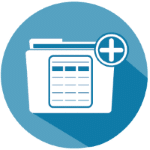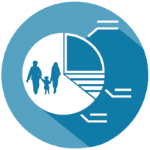Higher Education Space Planning & Utilization Tools
Sample Clients:
- University System of Georgia Statewide Space Utilization Study
- Tennessee Colleges of Applied Technology Statewide Master Plan
- Furman University Space Analysis & Plan
- Middle Tennessee Community Colleges Master Plans
- University of South Carolina Beaufort
- Kennesaw State University
Description:
TSW is a leading provider of Higher Education Space Planning & Utilization Tools institutional clients. Our team of experts has extensive experience in helping clients optimize the use of their space and make the most of their existing resources. One of the key tools we use in this process is our proprietary space model, Higher Ed Space Planning & Utilization Tools, which is designed to provide accurate benchmarks for learning spaces, gathering places, and office needs.
Our space model is based on the latest best practices in the fields of design and utilization, and is tailored to the specific needs of each client. This approach allows us to provide a comprehensive and accurate picture of a client’s existing square footage and usage characteristics, which is essential in order to maximize finite resources and make the most effective use of existing spaces.
One of the key advantages of the TSW Higher Ed Space Planning & Utilization Tools is that it provides a detailed analysis of the current usage of space, which enables clients to identify areas where they can make improvements and optimize their use of resources. This can include everything from re-configuring existing spaces to make them more functional, to identifying areas where new spaces can be added to meet the changing needs of the institution.
In addition to our space model, TSW employs a wide array of other space planning and utilization tools to ensure that we are able to provide the most appropriate solution for each client. This might include utilizing 3D modeling, virtual reality, and other visualization tools to help clients understand how proposed changes will impact their existing spaces. We also work closely with our clients to understand their unique needs and challenges, and to develop solutions that are tailored to their specific requirements.
Overall, TSW’s space planning and utilization services provide colleges, universities, and other institutional clients with the tools and expertise they need to make the most effective use of their resources, and to plan for future growth and success. Our space model, Higher Education Space Planning & Utilization Tools, is a proprietary tool that we have developed to provide accurate benchmarks for learning spaces, gathering places, and office needs. With the help of our space model, we are able to provide a comprehensive and accurate picture of a client’s existing square footage and usage characteristics, which is essential in order to maximize finite resources and make the most effective use of existing spaces. Additionally, our space planning and utilization services are optimized for SEO, which will help potential clients find us through search engines and increase our visibility online.
Space Audits

- Detailed walk-throughs of all campus spaces to determine, size, use, and suitability of all rooms
Space Database Creation

- Creation of integrated, easy-to-use data based on space audits
- Campus retains these for ongoing use
Utilization & Occupancy Studies

- Scheduling analysis to determine how often rooms are in use
- Study what percent of seats are filled
Space Needs Modeling

- Using metrics developed with the campus, determine existing and future space needs of all types
Space Metrics

- Metrics developed with the campus serve as benchmarks for room sizes, utilization, and scheduling
Migration Plans

- Adjacency studies show desired locations of departments and functions
- Migration plans show each step
Building Programing

- Based on needs identified, detailed building programs can be developed
- Include room characteristics
Enrollment Projections

- Based on trends and influencing factors
- Establish multiple planning benchmarks
- Determine growth by major/program
Demographic Analysis

- Analyze relevant regional population and demographic trends
- Examine job market characteristics
